If you have a garden or have ever taken a walk through a field in late summer or fall, you’ve probably seen this animal. You might have a strong negative reaction when you do see this, as many people admit being afraid of spiders.
But this common garden spider is really a gardener’s friend! And maybe if you knew a few things about it, you would be more welcoming.
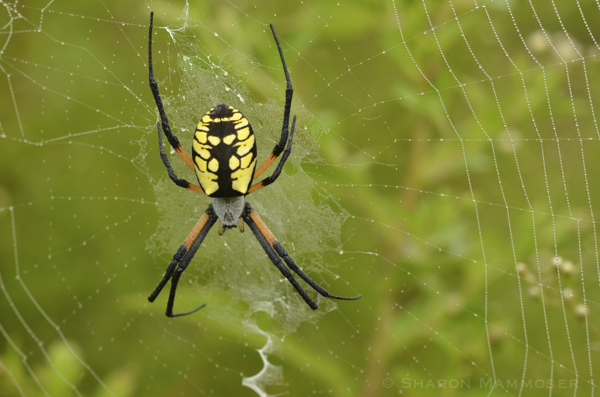
Here are 5 facts about the common garden spider:
1. You may have noticed that down the center of a garden spider’s web is a white zig zag that extends both above and below the spider in the center. This is why this spider is sometimes referred to as the zig zag spider, or writing spider. 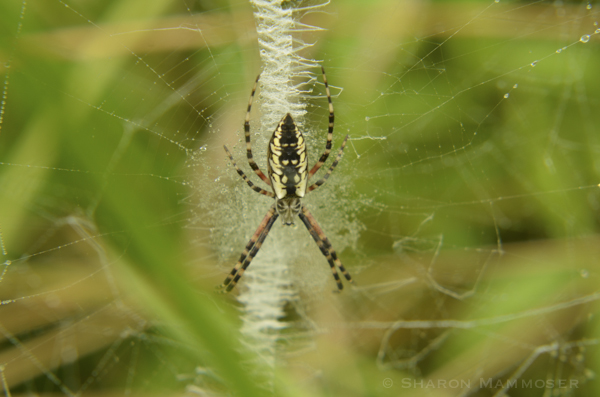 Do you know the reason for this? This white zig zag is called a stabilimentum because years ago scientists thought the purpose of this line was to give stability to the web. There are many theories as to the purpose of this zig zag and still widely up for debate. Some ideas include: to make the webs more visible so birds won’t fly into them, or to camoulflage the spider who sits in the middle and make her less obvious. Another idea, and one favored by some scientists, is that the zig zag actually works in the way lights sometimes attract insects–that is the line reflects ultra violet light and makes insects more prone to fly into them. Whatever the reason, this zig zag decoration sure does make them unique!
Do you know the reason for this? This white zig zag is called a stabilimentum because years ago scientists thought the purpose of this line was to give stability to the web. There are many theories as to the purpose of this zig zag and still widely up for debate. Some ideas include: to make the webs more visible so birds won’t fly into them, or to camoulflage the spider who sits in the middle and make her less obvious. Another idea, and one favored by some scientists, is that the zig zag actually works in the way lights sometimes attract insects–that is the line reflects ultra violet light and makes insects more prone to fly into them. Whatever the reason, this zig zag decoration sure does make them unique! 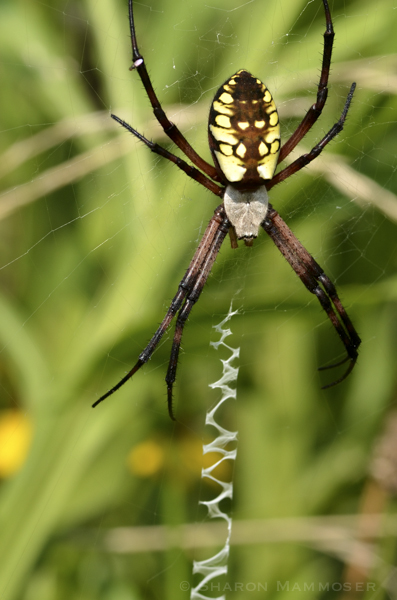 2.Unless you’re a fly, beetle, gnat, moth, or other insect, you have nothing to fear from this spider! It is not aggressive and will usually drop to the ground from the center of its web if you (or another big animal like a deer) approach too closely. Then after the danger has passed (you!) it will work on rebuilding its web. Despite its large size–19-26mm, the venom from this spider is not dangerous to people. Contrary to what many people would have you believe, this spider (and most other spiders) will not bite a person just because they can. Spiders may bite if they become trapped, but otherwise have no interest in people. You are not something she can eat!
2.Unless you’re a fly, beetle, gnat, moth, or other insect, you have nothing to fear from this spider! It is not aggressive and will usually drop to the ground from the center of its web if you (or another big animal like a deer) approach too closely. Then after the danger has passed (you!) it will work on rebuilding its web. Despite its large size–19-26mm, the venom from this spider is not dangerous to people. Contrary to what many people would have you believe, this spider (and most other spiders) will not bite a person just because they can. Spiders may bite if they become trapped, but otherwise have no interest in people. You are not something she can eat!
3.Garden spiders can produce 7 different kinds of silk, which is a protein when in the spider’s body, but becomes a solid when it exits the body from structures called spinnerets. Garden spiders, like many other spiders that build webs, will eat the middle part of their webs each evening and then recycle the silk into a new web before morning.
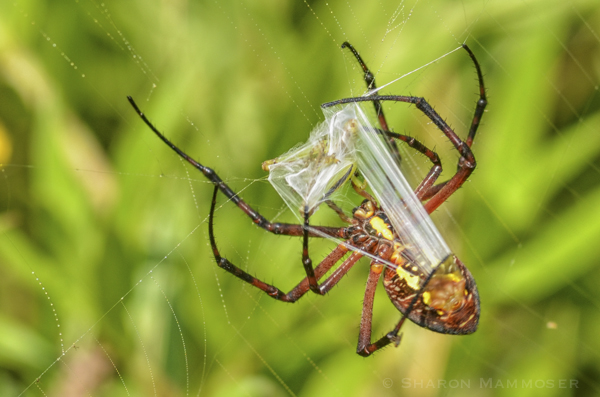
Not all silk is the same. Some is sticky, some thin, some thicker. It all depends what the spider needs it for.
4.Garden spiders usually live less than a year! Each fall the female mates and then puts her eggs in an egg sac and dies before winter. Her eggs will hatch out into tiny spiderlings in the spring. If you look closely in this photo below you can see the spider in the web on the left side and up at the very top, in the right side, is her egg sac. It looks like a brown ball that resembles paper mache’. Inside are up to 100 eggs!
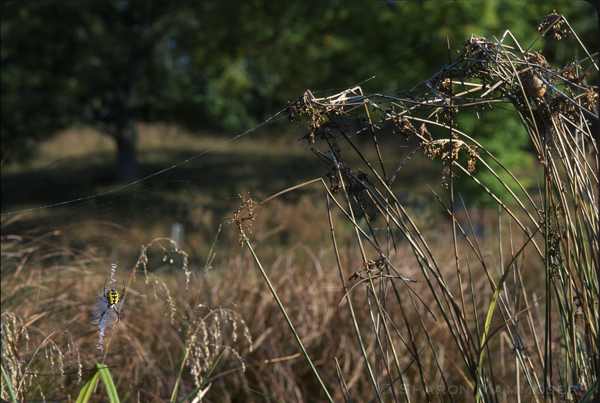
5.Though you can’t see them very well because they are small, garden spiders, like most other spiders, have 8 eyes. In the photo below, you can see some black dots in the front of the spider’s body, between its pedipalps and legs. There are four groups of two eyes, making 8 eyes total. All spiders that build webs, generally called orb weavers, have poor vision. That’s because they depend on their web to catch their prey, not their vision.
Want to know more about spiders? Check out a past post called Spider Myths Debunked! or to see more spider photos, check out Spider in focus!

